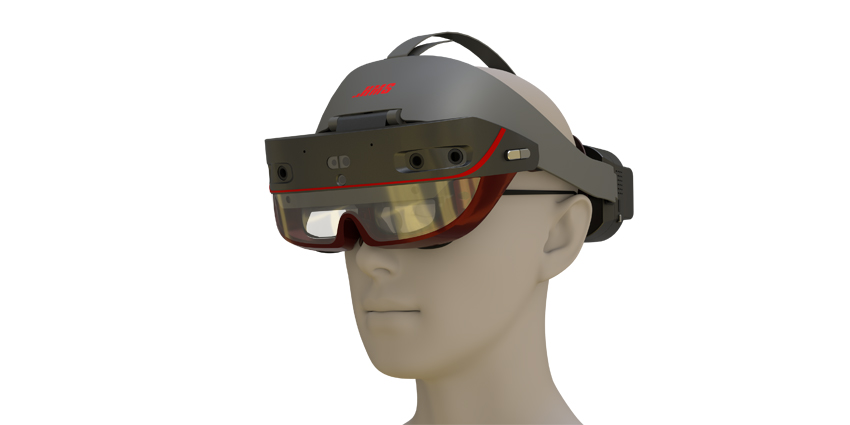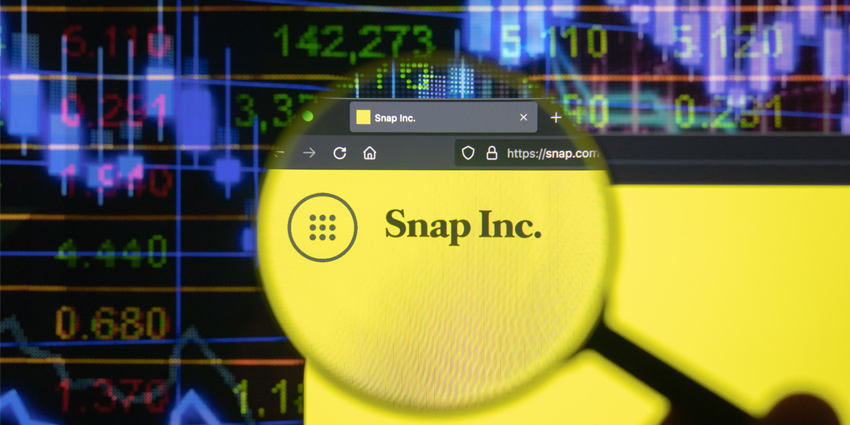Snap faced a rocky few months a while back when the firm invested in immersive hardware such as its XR drone and Smart glasses – to little avail. While these investments may still prove fruitful behind the scenes, the firm is seemingly slowing down on hardware production and instead pushing investments towards marketing opportunities across its massive user base.
Moreover, following a slight dip in new hardware developments, the firm is gaining ground as a leader in AR marketing and promotion services, working with significant end-users and brands.
Recently, Snap’s CEO Evan Spiegel also hinted at AI investments and innovations, following a strong Q3 for technology developments and capital gains. The CEO revealed this during a recent interview during APAC AR Day.
Spiegel noted that for developers and digital content creators, “AI is reducing the barriers to creativity.”
The CEO also added:
There’s actually a pretty small number of 3D assets in the world, mostly images or videos. And so, how can we use AI to actually reduce the barrier of creation for those 3D assets? That’s something we’ve been investing a lot in recently to make it easier for creators to build more immersive AR experiences by just reducing that barrier to creation of 3D images and making more exciting and immersive lenses with LLMs.
One of the critical hurdles the XR industry faces is headsets, namely their weight, cumbersome nature, and lack of content. As the technology evolves, XR headsets are getting lighter and lighter. Meanwhile, advancements in AI are significantly streamlining content creation pipelines for developers – increasing the number of services available and, therefore, driving adoption rates.
Spiegel explained:
I believe we all have a vision in our minds of what we want to create. However, often, the tools are not sophisticated enough to allow us to bring to life the images, videos, or AR experiences we imagine. I think AI will help bridge the gap between our imagination and what we can actually create on our phones or with AR glasses.
The CEO plans to review more about Snap’s investment into AI at Lens Fest 2023 on Nov 9th.
Snap Calls Q3 2023 AR Investment “Highlight” in Earnings Report
Alongside its hints at AI investments and services, Snap also gave significant insights into recent AR investments as part of its Q3 2023 earnings call. During the call, Snap highlighted major AR wins, including work with major international brands to bring its client’s campaigns to a new reality.
Evan Spiegel said:
Our revenue returned to positive growth in Q3, increasing 5% year-over-year and flowing through to positive adjusted EBITDA as our reprioritized cost structure demonstrated the leverage in our business model. We are focused on improving our advertising platform to drive higher return on investment for our advertising partners, and we have evolved our go-to-market efforts to better serve our partners and drive customer success.
Of its listed highlights, Snap focuses on its partnership with the 2023 MTV Music Video Awards, where the firms worked together to give audiences an AR-powered voting tool. Additionally, Snap worked alongside the 2023 NFL season, creating a sponsored AR experience for audiences in SoFi Stadium. The firm also leveraged AR to provide real-time stats to the 2023 FIFA Women’s World Cup, alongside partnerships with Lollapalooza Paris and Live Nation.
Snap also highlighted its technology innovations, which bring new marketing and outreach opportunities to the firm’s growing clients and user base.
Of its newly debuted Lens Studio features, Snap highlighted its Real-Time Neural Rendering ML Model – an object capture solution, Diffuse Indirect Lighting that improves the reflection of augmented digital assets, and Lens Creator Rewards that aim to support Snapchat developers as they create new content.
In terms of AI, the earnings call supported Evan Spiegel’s comments at APAC AR Day, as Snap also highlighted its recent innovations in its in-house AI research and development.
The Q3 earnings call noted how, following the May launch of Snapchat’s “My AI” chatbot, more than 200 million users have engaged with the services – the earnings call boasts that My AI is “among the most widely used AI chatbots available today.” Moreover, Snap highlighted how it debuted Dreams this year, enabling Snapchat users to create generative AI selfies.
During the earnings call, Snap also announced that its seven-year veteran Jerry Hunter, Chief Operating Officer, will leave the company after a successful tenure with the firm.
Spiegel noted:
I am deeply grateful to Jerry for the meaningful contributions he has made over his many years at Snap. His work to improve our advertising platform, serve our community, and build a strong team has helped lay the foundation for our future growth.
In terms of finances and users, Snap recorded a revenue increase of 5 per cent year-over-year to roughly $1,189 million compared to $1,128 million in Q3 2022, an increase in daily active users by 12 per cent year-over-year to approximately 406 million, trailing twelve months of operating cash flow sat at $207 million, Snap also recorded following twelve months Free Cash Flow at $2 million, a net loss of $368 million compared to $360 million, and finally, the firm’s adjusted EBITDA was positive $40 million compared to $73 million.
A Strong Year for Snapchat, a Deep Dive
In August 2022, Snap shelved its AR-ready drone Pixy after four months on the market. The same year, in its Q2 earnings report, Snap confirmed it would lay off 20 per cent of its 6,400-employee workforce. The report also confirmed that Snap’s stocks dropped by 80 per cent, and the firm’s Q1 earnings report recorded $360 million in losses at the time.
Despite financial failings, the firm also reported an 18 per cent year-over-year increase in daily active users for its Q2 2022 period. Following this tough period for Snap, the firm came back strong to leverage its deep users to encourage brands and firms to invest in immersive campaigns that could reach Snapchat’s massive clients.
More recently, in September, Genius Sports, Snapchat, and the National Football League’s Official League Data division partnered to create an AR stadium-based application that provides live stats to the audience.
The project was also supported by Verizon, supplying the 5G required to send big data items, like RT3D visualisations, to smartphones around the arena.
Moreover, Kris Soumas, Director of Platforms and Partnerships, Verizon Consumer Group, said,
The new Snapchat Lens at SoFi is yet another illustration of the amazing experiences offered by the combination of augmented reality and 5G. With this cutting-edge technology, we’re able to offer fans experiences they’ve never had before, and we’re grateful for the partnerships that helped bring it all to life.
Additionally, during the MTV Awards ceremony that Snap assisted with, audience members can vote in the Best New Artist category using Snap’s new Lens. Saucealitos developed the immersive experience as a further conduit for fans to participate in the voting process, along with traditional means.
The partnership also allowed fans to submit selfies with a Snap AR-powered Moonperson, the iconic MTV mascot, and overlay it in their homes while floating in the selfie background.
Moreover, in May, Snap hired two Meta employees, Patrick Harris as its Senior Vice President of Partnerships and David Sommer as Head of Verticals, to assist in delivering personalised advertising experiences and familiarising the platform’s toolkits to third-party developers. Following this hiring, many third-party firms and brands – such as NFL, Verizon, and MTV – are finding success on the firm’s AR Lens platform.
Moreover, Snap partnered with Microsoft in 2023 to integrate AR-lite filter effects on Teams, such as “World Lenses”, that allow users to place 3D objects in their environment.
Snap Lenses in Teams helps users in workplace, education, and collaboration settings learn and collaborate more effectively and create more immersive experiences for customers and partners.
The Microsoft Snap partnership comes as the firms make Teams dialling more flexible for employees by removing the requirement for a video. Its new Avatar for Teams systems allows workers to dial in using immersive virtual humans. For example, workers who cannot share a video feed due to a poor internet connection or unsuitable working environment can still participate by utilising immersive features and audio-only dial-in options.
Behind Snap’s AR Enterprise Services
Alongside the Meta hirings, Snap set itself up for great success in 2023. Earlier in the year, at its 2023 partner summit, Snap introduced AR Enterprise Services (ARES) for creating engaging branded AR marketing and advertising content.
At the time, reports revealed that Snap has 300,000 content developers who have created up to 3 million Snapchat filters. Reports at the time also cited a Médiametry survey from the spring of last year, which found 94 per cent of French people aged 15 to 24 were Snapchat users.
ARES allows brands to create interactive content and personalised advertising avenues like AR try-on clothing, promotional wearables, and product recommendation solutions which leverage RT3D graphics and technology.
The solutions also include core dedicated tools for enabling branded AR content, such as 3D Viewer, Fit Finder, AR Try-On, Enterprise Manager, and Hands-On Integration Services.
Snap’s ARES Enterprise Manager also gives developers access to a frontend dashboard, a backend for creating AR content, and the Snap Enterprise Manager platform for leveraging real-time analytics and performance metrics,
Snap’s ARES Enterprise Manager’s frontend dashboard and backend for developing AR content incorporates its Shopping Suite SDK and manages 3D asset catalogues. Developers can tap Snap’s Enterprise Manager platform for real-time analytics and provide performance engagement insights for businesses.
Furthermore, the firm’s Hands-On Integration Services facilitate seamless onboarding, streamlining the AR enterprise journey from start to finish. According to Snap, brands adopting immersive creative experiences were 82 per cent more likely to receive recommendations, “making AR Mirrors a must-have addition to stores.”
As 2024 approaches, there is a good chance that auidences consumers, brands, and enterprises will feel an increasing emergence of XR following significant investments from leading firms. A second chance for XR of sorts, following a loss of faith thanks to some market-wide empty and early promises, XR solution providers must tread carefully as firms explore new use cases to ensure a recapturing of audience faith.







